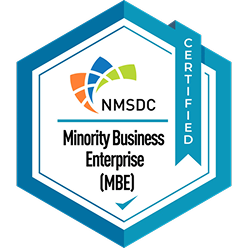
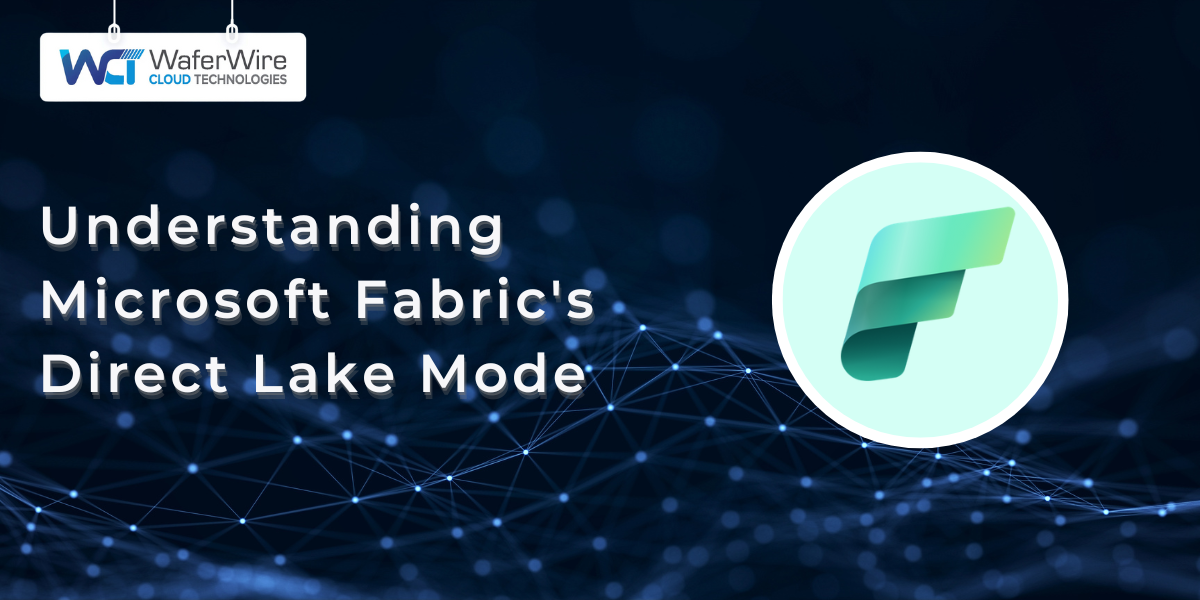
Traditional ETL processes often create bottlenecks in data analysis, slowing down decision-making and increasing operational costs. Microsoft Fabric’s Direct Lake Mode eliminates this challenge by allowing businesses to query data directly from the data lake, reducing the need for time-consuming data movement and transformation.
This blog covers the features, benefits, and technical details of Direct Lake Mode, along with its limitations and future potential for data analytics.
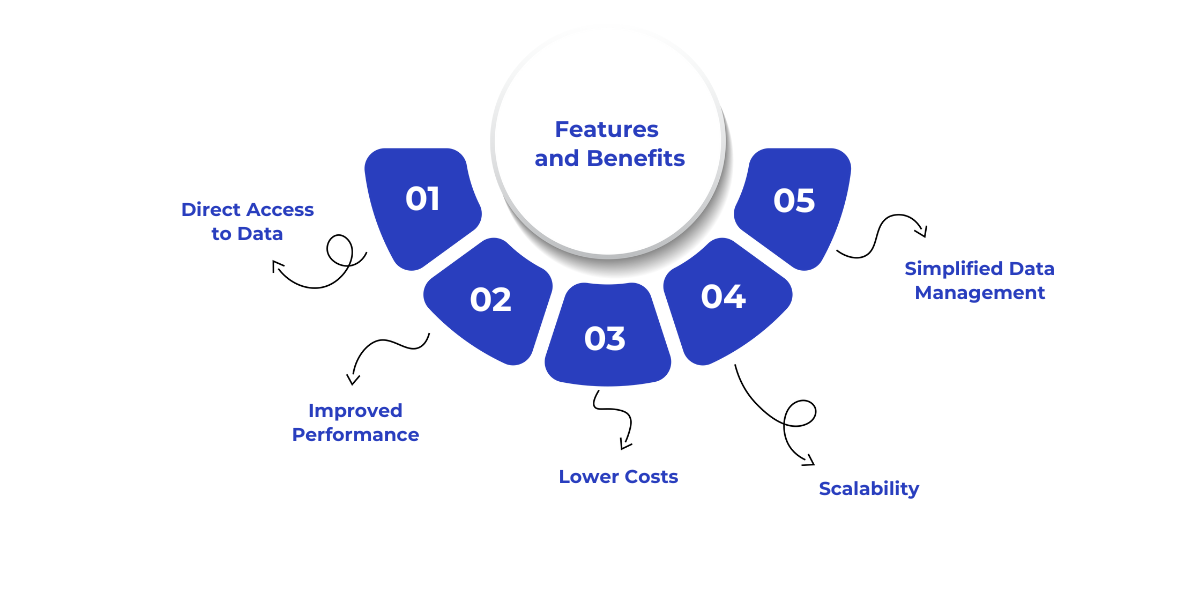
Direct Lake Mode offers several key advantages that help businesses streamline their data architecture and improve analytics performance.
Below are the features and benefits of using Direct Lake Mode:
Example: Consider a global retail chain that stores transaction and inventory data in its Azure Data Lake. With Direct Lake Mode, they can query large volumes of raw transactional data directly, reducing time spent on transforming the data and quickly gaining insights into customer purchasing patterns.
Next, we’ll explore the Semantic Model in Direct Lake Mode, which plays a crucial role in turning raw data into valuable business insights.
In Direct Lake Mode, the Semantic Model serves as the foundational layer that interprets raw data and makes it available for analytics.
This model defines the structure and relationships within the data, transforming raw data from the lake into a format that’s meaningful for business analysis.
Also Read: Data Fabric vs Data Lake: Differences and Use Cases
Now, let’s break down the technical foundation of Direct Lake Mode and see how it enables fast and efficient data queries directly from the data lake.
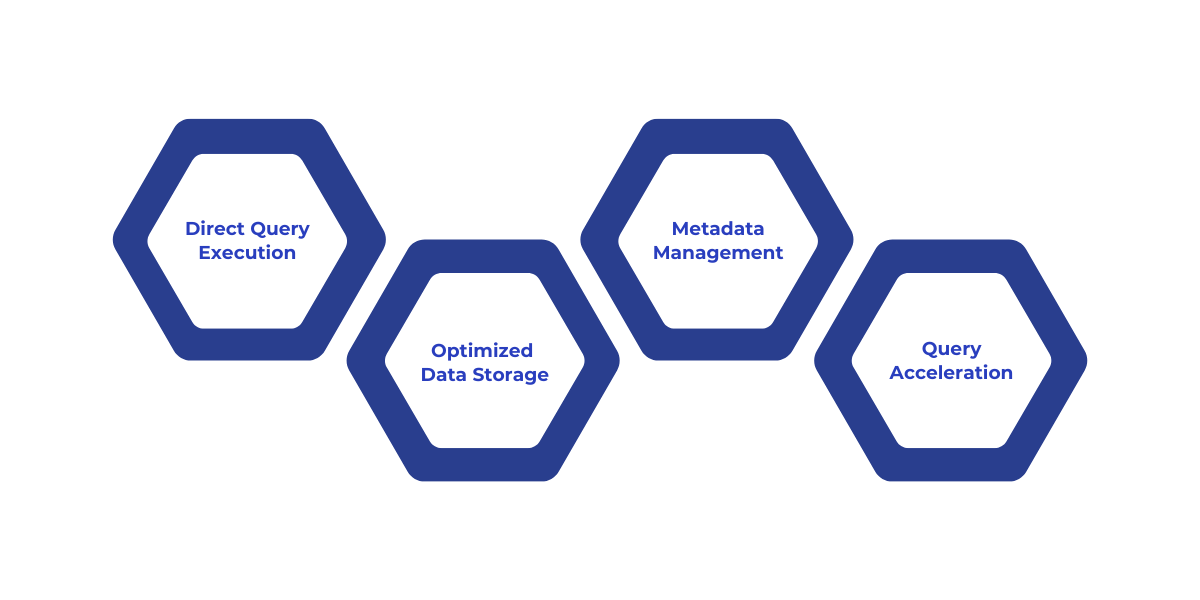
The technical foundation of Direct Lake Mode involves several key processes that ensure seamless interaction between the data lake and the querying platform.
These processes enable fast, efficient, and accurate data retrieval without the need for complex ETL procedures. Here's how it all comes together:
Instead of extracting and transforming data before queries, Direct Lake Mode enables the execution of queries directly on data stored in the lake, often utilizing query engines optimized for large-scale data operations.
The data lake is designed to store structured, semi-structured, and unstructured data, making it the perfect environment for Direct Lake Mode, which relies on diverse data types for analysis.
In Direct Lake Mode, effective metadata management ensures that queries are executed efficiently and accurately. By defining the structure of the data, metadata enables optimized and reliable querying.
To improve performance, Direct Lake Mode often employs query acceleration technologies such as indexing or caching. This ensures faster query results even when working with large volumes of data.
Also Read: Understanding the Benefits and Examples of Data Modernization Strategy
Direct Lake Mode boosts performance and operational efficiency by enabling real-time data queries without the need for ETL processes. This approach eliminates data movement, reducing latency and delivering faster insights.
Here's how it enhances performance:
While Direct Lake Mode provides numerous advantages, there are certain limitations and considerations that businesses need to keep in mind to ensure optimal performance and data integrity. Here’s a breakdown of key challenges:
Finally, let's examine the future of Direct Lake Mode, highlighting upcoming capabilities, AI integration, and its expanding adoption across industries.
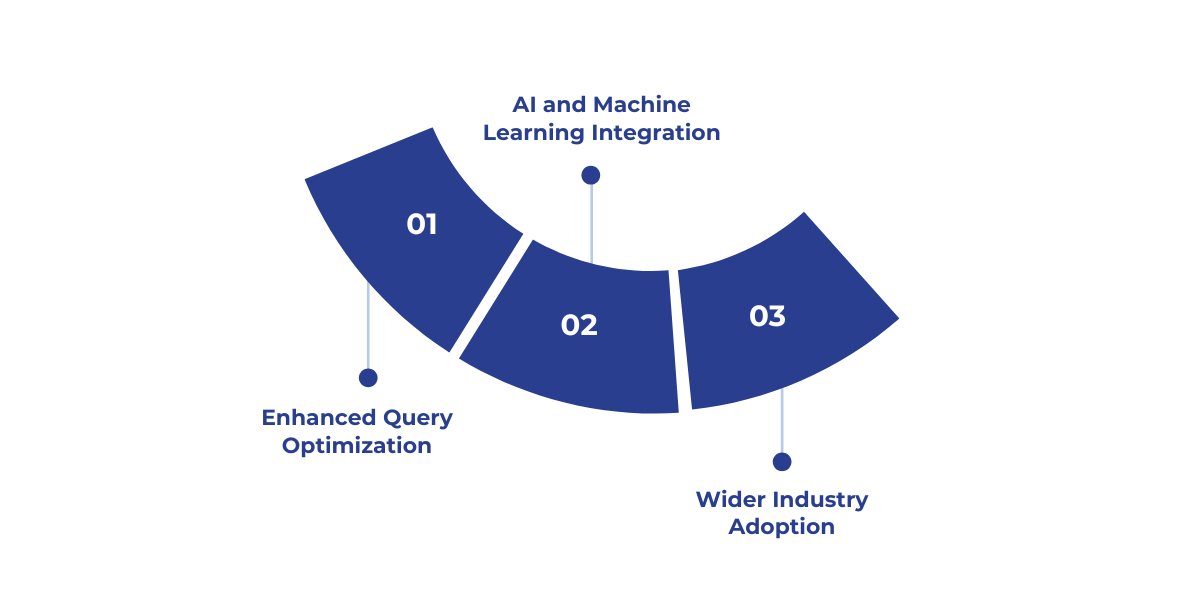
As data volumes increase, Direct Lake Mode will become a central component of modern data architectures.
Its ability to query data directly from the lake, combined with ongoing improvements in optimization and AI integration, will drive faster insights, better performance, and lower costs. Some key changes in the future will include:
Advanced query acceleration will improve the speed of complex queries, particularly benefiting industries like retail, where quick data insights are essential for pricing and inventory management.
Direct Lake Mode will increasingly integrate with AI to enable real-time, automated analytics. In manufacturing, this means predictive maintenance and supply chain optimization based on live data, improving operational efficiency.
With growing demand for real-time analytics, finance, healthcare, and retail will use Direct Lake Mode for quicker decision-making, improved risk analysis, and more personalized customer experiences.
Direct Lake Mode in Microsoft Fabric offers businesses a powerful solution to improve data access, enhance performance, and reduce costs.
As the demand for real-time analytics increases, Direct Lake Mode will continue to be an essential tool for businesses looking to stay competitive.
However, its success depends on proper implementation and optimization. Organizations must understand technical complexities, data governance, and scalability to utilize the potential of Direct Lake Mode fully.
At WaferWire, we specialize in guiding businesses through the integration and optimization of Microsoft Fabric.
Contact us today to begin your journey toward optimized data management and real-time intelligence.
Q: How does Direct Lake Mode ensure consistency across data queries?
A: Direct Lake Mode uses metadata management to define the structure and relationships of raw data, ensuring consistency and accuracy across all queries, even with large, unstructured datasets.
Q: Can Direct Lake Mode integrate with other data processing platforms beyond Microsoft Fabric?
A: While Direct Lake Mode is optimized for Microsoft Fabric, it can integrate with other data processing platforms using APIs and connectors, allowing businesses to connect to external systems and tools.
Q: What kind of performance improvements can businesses expect when using Direct Lake Mode?
A: Businesses can expect faster query execution, reduced data retrieval latency, and improved processing times, especially for large datasets, enabling real-time decision-making and insights.
Q: How does Direct Lake Mode support scalability for growing data volumes?
A: Direct Lake Mode supports scalability by utilizing the cloud-native infrastructure of Microsoft Azure, enabling businesses to scale their data lakes without compromising performance or increasing infrastructure costs.
Q: What are the potential security risks when using Direct Lake Mode?
A: Direct Lake Mode requires robust data governance and access control measures to mitigate security risks. Businesses must implement encryption, role-based access, and monitoring to protect sensitive data.
